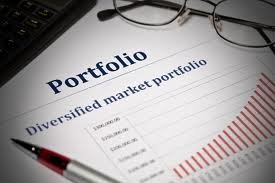Each type of investment has distinct advantages and disadvantages, and because each tends to behave differently in different types of economic mood swings. Your retirement portfolio should be broadly diversified and well balanced to last for your and your dependant’s life time. Your may have various financial assets viz. shares, debentures, gold, bonds, life insurance, annuities, mutual funds, fixed deposit, company deposits, PPF, monthly income schemes, national savings certificates, etc in your portfolio. In addition to this it may also contain tangible assets that can take the form of gold, silver jewellery, precious stones like diamonds, real estate, painting, carvings etc. and other collectibles. You may also have some insurance to cover risk.
But, how can you be sure that your portfolio has all the components adequate enough to cover all your retirement needs? Let’s review various factors that you should consider while building your Retirement Portfolio.
Your Attitude Towards Risk
Firstly, understanding your attitude towards investment risk is very important. Normally we come across two types of investors :
1. Risk takers: They are willing to take high risk to get high return on their investments. They have high-risk tolerance. Their portfolios consist of equities, growth schemes of mutual funds, unit linked plans, variable annuities, real estate and long term deposits. The proportion of risky assets in the portfolio is higher as compared to safe assets.
2. Risk averse: Generally, a large number of people are risk averse. They want to optimize the rate of return on their portfolio with minimum risk. They invest in diversified assets to minimize the risk of their portfolio. Their portfolio of assets varies from low return- low risk fixed deposits to high risk-high return shares. But a smaller proportion is devoted to equities and growth schemes of mutual funds and a large proportion is devoted to low and medium risk assets. Their investments include short-term deposits, fixed/variable annuities, government bonds, mutual fund units or monthly income scheme.
Both these investment strategies are good, however you need strike the right balance depending on your age, your investment time horizon and your current financial situation. Remember, the primary objective of retirement planning is to generate regular income after retirement.
Let us assume that the person gets a regular income of a fixed amount. This amount may be sufficient to start with. But inflation can result in increased financial needs over a period of time and the regular fixed income may become insufficient to meet the needs after a period of time. Hence, your portfolio should beat the inflation so as to generate a comfortable stream of income throughout your life. This is only possible, if you take balanced approach and review and adjust your portfolio frequently.
How to determine the right portfolio mix?
You can follow a general rule of thumb (i.e. 100 minus your Age) to determine the allocation to risky assets in your financial portfolio. So, when the retirement is long way off, it is desirable to take greater risk to accumulate wealth but as a person reaches the retirement date he/she should change his attitude towards risk and adopt a more risk-averse investment strategy.
| Rule of Thumb : Determine your portfolio mix | ||
| Your Age | Fixed Rate Investments | Market Linked Investments |
| 20-30 | 20-30% | 70-80% |
| 30-40 | 30-40% | 60-70% |
| 40-50 | 40-50% | 50-60% |
| 50-60 | 50-60% | 40-50% |
| 60-70 | 60-70% | 30-40% |
| 70+ | 80+% | Less than 20% |
For example, when you are in your 20’s you can have upto 80% of your investments in Equities, Equity Mutual Funds or Unit Linked investments and 20% in Fixed Deposits, Bonds, NSC, etc. As you grow older allocation to fixed rate investments avenues needs to go up and market linked investments should be reduced gradually.
Failure to reduce the market linked investments as you grow older can cause severe consequences. Imagine, what will be the return on your portfolio if the share market collapses? When such a situation arises, the portfolio return reduces to zero or may even some times become negative i.e. principal loss, and then you will have to wait till the markets rises again. If the situation does not turn around in a short period, it will be very difficult for you to maintain your standard of living post retirement. Never ignore your risk tolerance.
While it is important to take greater risk early in the accumulation phase, bring down the risk exposure as you approach closer to your retirement to preserve and nurture accumulated wealth.
Liquidity of your Retirement Portfolio
After risk and return, portfolio liquidity is the important factor, which you should think of while planning for post retirement. Liquidity refers to the ability to buy or sell an asset without inordinately influencing the price at which the transaction is consummated.
Often, to preserve tangible assets such as, gold, silver jewellery, precious stones like diamonds, real estate, painting, carvings etc. maintenance cost by way of insurance and storage would need to be incurred. During the post retirement period, if this maintenance cost is draining your retirement income, you might have to liquidate them and convert them into income producing assets. Assets like real estate, other than self-occupied house may be systematically liquidated over a short period of time to make the investments liquid. Alternatively, you may consider renting out such real estate to cover maintenance costs and generate some additional income stream.
Reviewing your Life Insurance
No matter how much you have saved or invested over the years, sudden eventualities, such as death or critical illness, always tend to affect your family financially apart from the huge emotional loss. Though one of the main objectives of taking insurance is to provide financial cushion to your family for times when you are not around, but it’s not the only objective. Insurance covers the risk of a person dying too soon or live too long. Insurance helps you to build a corpus for yourself; provides you with comfortable retired life and even takes care of your lengthy medical bills.
Even after you retire, you may need your life insurance for many reasons. One important reason is to make sure your spouse will have enough income, if you pass away first. Some pensions pay reduced amounts or even nothing at all, to surviving spouses. Life insurance can provide the funds to help offset that possible loss of income.
You need to review your insurance cover regularly and take additional cover to safeguard your family. When you retire, even though your original purpose for acquiring life insurance may have changed, as your children have grown up and your home mortgage is paid, you may still have a need for life insurance. Do not drop your life insurance without first consulting with a financial planner or insurance expert. Once you lose your insurance, it may be difficult or even impossible to get insured again.
Medical Emergency Cover
With age come health problems. With health problems, come medical expenditure which may make a huge dent in your income post retirement. Failure here could lead you to liquidate your assets in order to meet such expenses, which may adversely impact your retirement plan.
Your portfolio should contain health insurance i.e. Mediclaim, Personal Accident Insurance, Hospitalisation policy, Critical illness policy, etc so as to reduce the lump sum expenditure in the event of any medical emergency post retirement. It is worthwhile to take these medical cover as soon as possible as they tend to get costlier with your age.
It is true that medical insurance provides compensation for the medical expenses incurred, but there are several limitations. Depending only on medical insurance may not be enough to take care of all medical expenses. Therefore, individuals must aim at building a separate medical corpus to supplement the medical insurance and cater to emergency requirement post retirement.
Conclusion
Ultimately, the best asset allocation for your retirement portfolio will depend on your own circumstances and tolerance for risk. Knowing your retirement needs and planning for it while you still earning can take away lots of unpleasant surprises when you retire. With some care and discipline you can build a retirement portfolio suitable for a comfortable and peaceful retirement.


To create a successful credit rating, you should first decide if you want to actively manage your money or just put it in a few funds and forget about it. You have many options for building retirement portfolio such as investing in index funds, secure investments, stocks, bonds etc.
i think tolerance for risk is the most important thing. how can you cope when something bad happened?
i'm on risk averse. just play safe
how can you deal with such boringness during retirement time?
retired …. im not thinking
maybe with saving more ,,,,,
looking for sitejob maybe
going travel around the world … enjoy rest of life
some points Set up a separate IRA for real estate investments. Even if only a small portion of the IRA is used for real estate, he noted, the IRS could penalize the entire balance in a prohibited transaction.
Thankyou regarding delivering this original considerably superior particulars. My wife and i wishes to speak about something along with your neighbors in addition to social media marketing. It is best to undoubtedly become modernize utilizing your web page, i will be day-to-day consumer linked to the internet webpage. allow thank you once again.
Your attitude before risk will actually determine how much success you will achieve after all, that's totally well said. Good post!
Good article. Portfolio mixing and liquidity part is the key points I feel for long term investment.